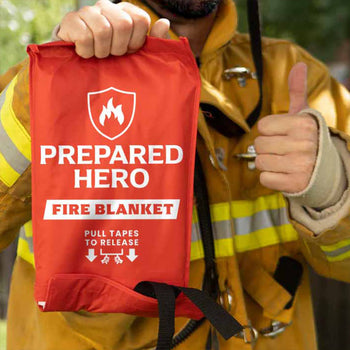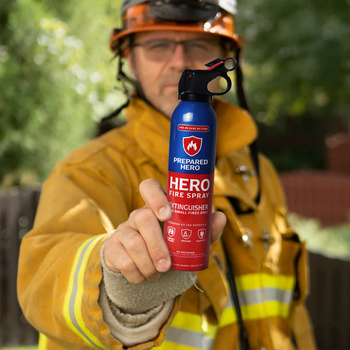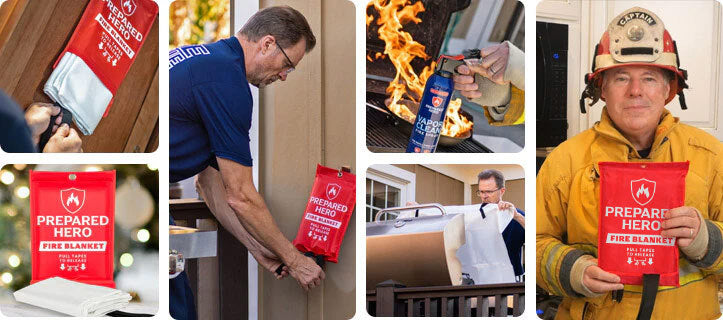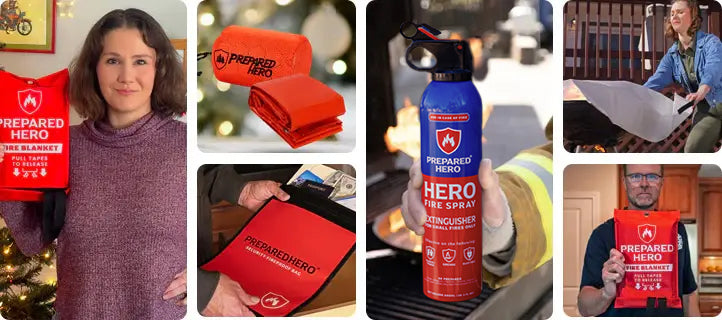Where you put your smoke detectors matters just as much as installing them. Proper placement makes sure they can detect...
While fire makes our lives easier (e.g., cooking and making tools), it also causes damage and death.
One of the most dangerous types of fire is a structure fire. It can quickly spread and consume structures, leaving damages, injuries, and even death in its wake.
But here's the good news: structure fires can be prevented.
In this blog, we'll explore the types of structure fires and how to prevent them. By understanding structure fires and taking proactive measures, you can protect your homes, families, and communities.
What Is a Structure Fire?

As its name suggests, structure fires involve buildings, not just the contents.
In particular, it affects the structural components of residential buildings (e.g., single-family detached homes, townhouses, apartments, and tower blocks) and various commercial buildings (e.g., offices and shopping malls).
This contrasts "room and contents" fires like vehicle, chimney, wildfires, and other outdoor fires.
In addition, the speed at which a structure fire spreads depends on the types of materials used in building construction.
Firefighters usually respond to structure fires through ladder trucks, engines, rescue squads, chief officers, and an EMS unit― each of which have specific assignments.
However, the actual response and assignments vary between fire departments. In most cases, fire departments have pre-determined mobilization plans for structure fires in their area. This plan usually includes using the nearest aerial firefighting or foam-carrying vehicle.
Types of Structure Fire
- Full Structure Fire
- Partial Structure Fire
- Smoke-Showing Structure Fire
Firefighters usually classify structure fires depending on how much of the structure is on fire.
1. Full Structure Fire

As the term implies, this structure fire involves the whole building burning. In this case, the building and its contents are burning.
Given this, firefighters must use full force to extinguish the fire. However, at the end of it all, buildings that suffered from full structure fires are usually burned down.
2. Partial Structure Fire

A partial structure fire involves certain parts of the structure. For instance, the fire might be confined to the attic, kitchen, or basement.
This requires less force and resources than a full structure fire. Nevertheless, firefighters must respond to a partial structure fire immediately to prevent it from burning down the whole building.
3. Smoke-Showing Structure Fire

As its name suggests, this type of fire shows smoke upon the firefighters' arrival. It usually doesn't involve flames, making it the easiest type to put out.
Structure Fire Resistance Ratings
- Type I – Fire-Resistive
- Type II – Noncombustible
- Type III – Ordinary
- Type IV – Heavy Timber
- Type V – Wood Frame
The materials used in buildings affect their durability and resistance to fire. Here are the fire resistance ratings of structures based on the materials they're made of:
1. Type I: Fire-Resistive

Type 1 buildings are fire-resistant high-rises that stand over 75 feet tall. In addition, Type 1 buildings are the safest during a structure fire because they can withstand high temperatures for extended periods. They also won't likely collapse once a fire occurs.
Materials: Type 1 buildings use reinforced concrete and protected steel with fire-resistant coating.
Strength: Their materials are not vulnerable to collapse, non-combustible, and fire-resistant for up to four hours.
Weakness: Exposed steel might wear down. Plus, difficult-to-penetrate roofs and windows can prevent ventilation during a fire.
Fire Prevention: Some Type 1 buildings feature specialized HVAC systems and self-pressurizing stairwells that help prevent fire from spreading.
2. Type II: Non-Combustible

Type 2 buildings include new or recently renovated commercial buildings, such as superstores and shopping centers. While these buildings generally use non-combustible materials and have fire suppression systems, they're still prone to collapse once their metal roofs get exposed to high temperatures.
Materials: Their walls feature fire-resistant tilt-slab construction or reinforced masonry. They also use non-combustible metal and lightweight concrete on their roofs.
Strength: Type 2 buildings have one to two hours of burn resistance.
Weakness: Without sufficient ventilation, temperatures quickly increase, which leads to collapse.
Fire Prevention: Type 2 buildings have roll-up doors or skylights on their exterior, allowing firefighters to ventilate them.
3. Type III: Ordinary

Type 3 buildings include schools, offices, and houses with non-combustible walls and wood roofs. Older Type 3 buildings usually have conventionally framed roofs, while newer buildings have lightweight roofs.
Materials: Walls of Type 3 buildings involve non-combustible tilt slabs or reinforced masonry. However, their wooden roofs are flammable.
Strength: Due to their fire-cut joists and non-combustible masonry, the walls of Type 3 buildings can stand even if their floors collapse.
Weakness: Several Type 3 buildings have connected horizontal spaces or attics, which let the fire spread quickly unless they use firesafing materials.
Fire Prevention: The roof systems in Type 3 buildings determine how firefighters must cut the roof to ventilate the building.
4. Type IV: Heavy Timber

Type 4 buildings were made before the 1960s using huge lumber connected by metal plates and bolts. This type usually includes barns, old churches, and old factories. Easily recognized by firefighters, these buildings have wooden walls and roof spans.
Materials: The walls and roofs of Type 4 buildings are made of large, heavy pieces of lumber.
Strength: Load-bearing walls are non-combustible. Plus, their drainage systems allow firefighters' water to leave the structure without risking collapse and increasing weight.
Weakness: The metal joints in Type 4 buildings collapse because of high temperatures. Additionally, old factory hazards, like machinery, oil, and products, increase fire intensity.
Fire Prevention: Huge lumber holds up well in a fire. Plus, many Type 4 buildings have fire-resistant paint.
5. Type V: Wood Frame

Several modern homes fall into the Type 5 category because they use combustible materials (usually wood) in the walls and roof. Unlike the heavy lumber in Type 4 buildings, Type 5 structures use manufactured or lightweight wood.
Materials: The walls and roofs of Type 5 buildings are made of manufactured wood and other combustible materials.
Strength: Bigger beams give structural support, which helps prevent collapse. Plus, interior platforms help prevent fire from spreading vertically.
Weakness: Manufactured or light wood burns quickly. Modern construction also leaves Type 5 buildings at higher risk of burning.
Fire Prevention: Drywall briefly protects the structure. In addition, the wood-framed roofs allow firefighters to ventilate the building efficiently.
How to Prevent a Structure Fire
A structure fire puts your family and property in danger. Here's how to prevent a structure fire to keep your loved ones safe:
1. Check your fire sprinklers.

Fire sprinklers are your first line of defense against fires.
The sensors will trigger the alarms when smoke and heat enter these devices. As a result, you can put out the fire before it becomes an emergency. So, you must keep your fire sprinklers in excellent condition.
As a rule of thumb, fire sprinklers must be checked at least once every three months. Plus, vane and pressure switch types must be tested once every six months. Lastly, fire sprinklers must be thoroughly tested once per year.
During a complete fire sprinkler system test, a technician checks all parts. These include testing the water flow, alarm, dry pipe, fire pump, valves, and antifreeze concentration (in applicable systems).
Like any appliance, fire sprinklers wear down after years of use. To keep your device in top shape, replace your fire sprinklers every ten years.
2. Inspect your appliances regularly.

While appliances like ovens, dryers, and stoves make life easier, they pose a fire hazard at home. Thankfully, regular inspections make your home safer.
Here's how to make sure your appliances don't cause fires:
Kitchen appliances
- Before cooking, make sure your stove, oven, and hot plate are far from flammable items like rags, curtains, and storage boxes.
- Don't leave your kitchen appliances unattended while they're on.
- Keep a fire extinguisher or fire spray in your kitchen in case a grease fire starts. Check our guide if you don't know how to use a fire spray.
Living room appliances
- Keep your fireplace clear of debris after use.
- Have your chimney cleaned by a professional at least once a year.
- Keep all cords away from furniture and rugs.
Bedroom appliances
- Don't overuse extension cords or crowd them into one socket.
- Avoid placing lamps or candles near curtains and rugs.
- Don't plug cords near your curtains, clothes, carpet, and bed.
- Never smoke in bed.
3. Prepare a structure fire prevention kit.

A fire prevention kit decreases the risk of a structure fire. Since house fires spread quickly without ventilation, you must keep the said kit in an accessible place.
Here are the items you must have in your structure fire safety kit:
Fire spray

Fire blanket


Fire blanket hook

Fire protection gloves

Smoke Mask

Frequently Asked Questions
What causes a structure fire?
Here's what causes a structure fire: short circuits, flammable and combustible items close to a heat source, ground faults, and unattended heat sources (e.g., cigarette ash, fireplace ash, and sawdust).
What is the leading cause of structure fires?
The leading cause of structure fire is unattended cooking. It's followed by heating equipment and electrical malfunction, according to FEMA. So, make sure not to leave your kitchen unattended while cooking.
What are the types of structural fires?
The types of structural fire are Type I: Fire-Resistive, Type II: Noncombustible, Type III: Ordinary, Type IV: Heavy Timber, and Type V: Wood Frame.
How common are structure fires?
Structure fires occur about 358,500 times each year, according to the NFPA. More than 3,000 Americans die in fires every year, according to FEMA.
Conclusion

Structure fires are extremely dangerous. They can cause significant damage to properties and lead to injuries and fatalities.
Protect yourself and your loved ones from structure fires by checking your fire sprinklers, inspecting your appliances, and preparing a fire prevention kit.
So, what are you waiting for? Complete your structure fire safety kit with fire prevention tools from Prepared Hero now!


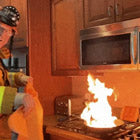 Fire
Fire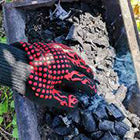 Safety
Safety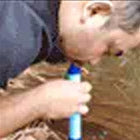 Survival
Survival Protection
Protection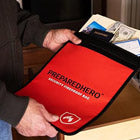 New
New
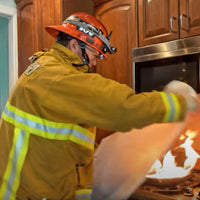 Fire
Fire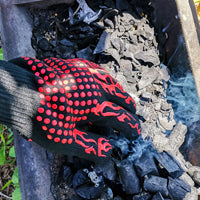 Safety
Safety Survival
Survival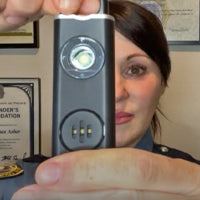 Protection
Protection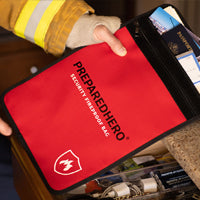 New
New
